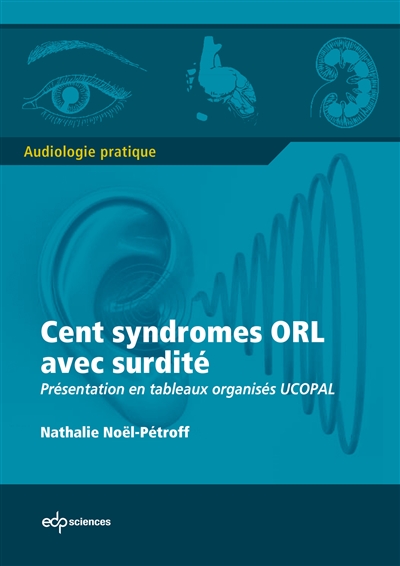par Noël-Pétroff, Nathalie (1965-....)
EDP sciences
-
-
Disponible - 616.25 NOE
Niveau 3 - Médecine
par Noël-Pétroff, Nathalie (1965-....)
EDP sciences
-
Disponible - 616.25 NOE
Niveau 3 - Médecine

Un panorama des syndromes les plus fréquents chez les enfants sourds. L'organisation des informations par tableaux permet une visualisation rapide des symptômes, des syndromes et des connaissances médicales.

Audiologie pratique
Cent syndromes ORL avec surdité
Présentation en tableaux organisés UCOPAL
Cet ouvrage est un petit dictionnaire de cent syndromes avec atteinte auditive, dont l'expression clinique est présentée en tableaux UCOPAL.
La première partie explique la méthode de construction du tableau UCOPAL, nouvel outil permettant d'organiser les symptômes d'un syndrome par spécialité medicale, pour en faciliter la lecture.
Dans la deuxième paitie, la technique du tableau UCOPAL est appliquée à cent syndromes essentiellement génétiques, rangés par ordre alphabétique, souvent rencontrés chez les enfants sourds. Cette présentation en tableau ne modifie pas les connaissances médicales actuelles de ces syndromes, mais facilite leur consultation et la recherche d'un symptôme précis à l'intérieur d'un syndrome donné.
Disponible - 616.25 NOE
Niveau 3 - Médecine